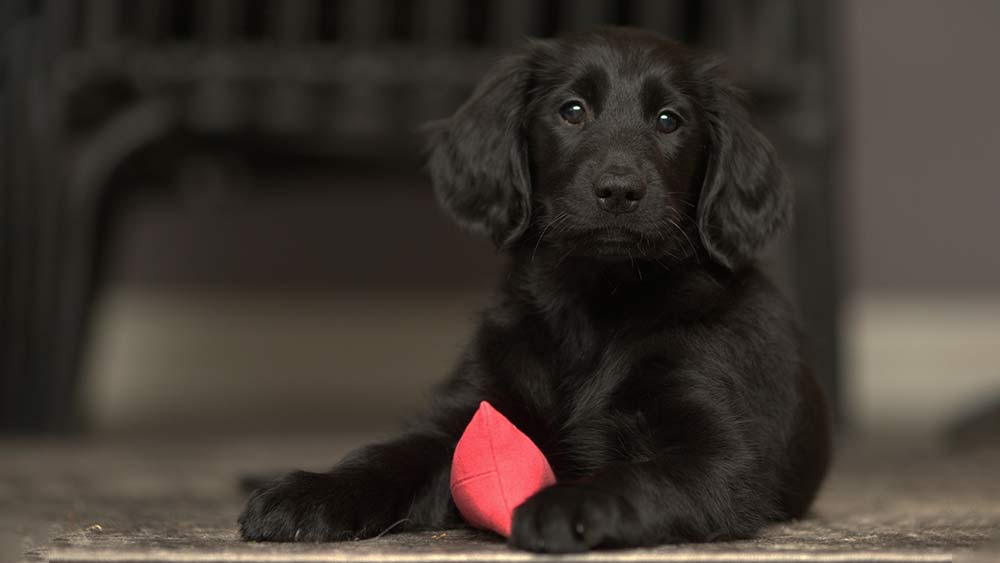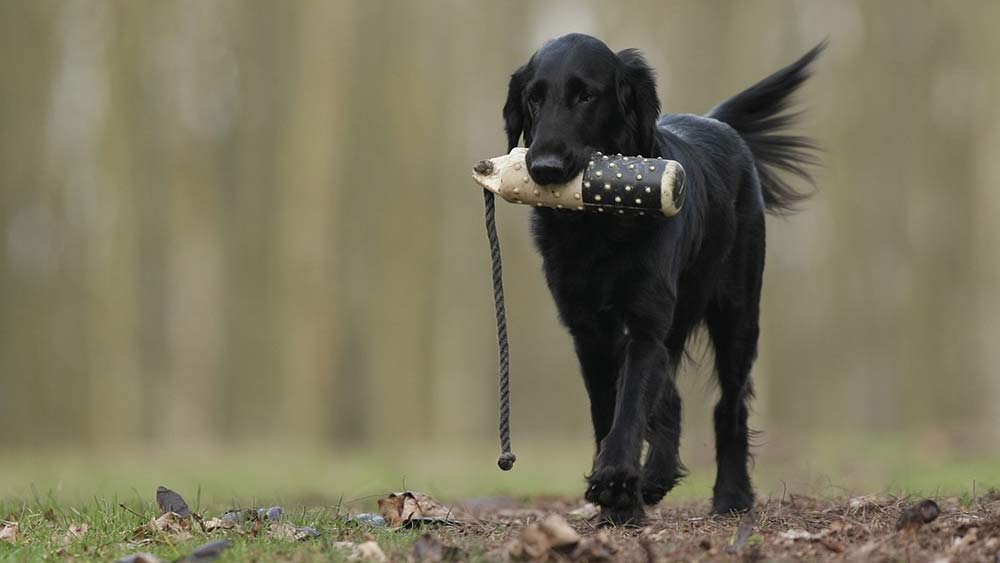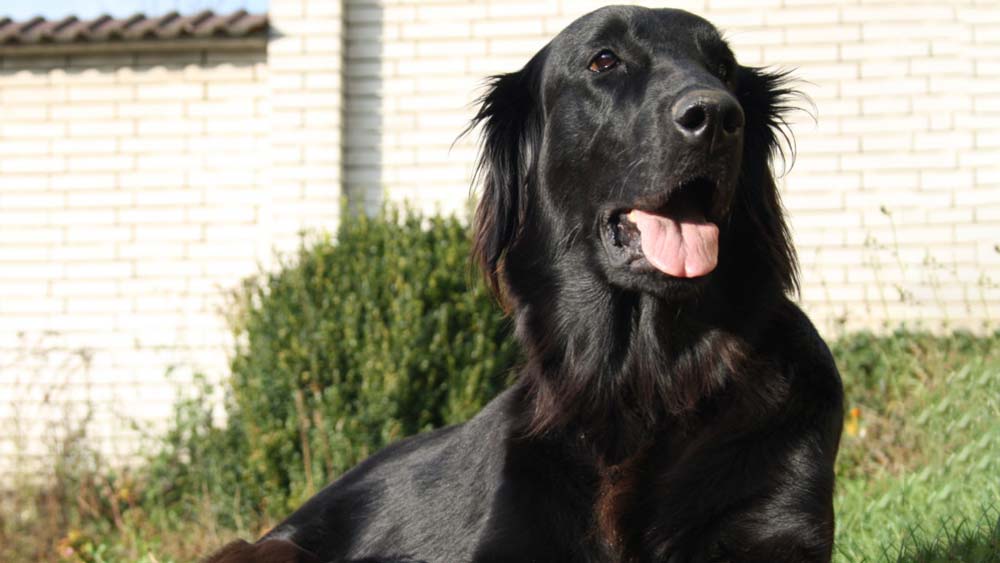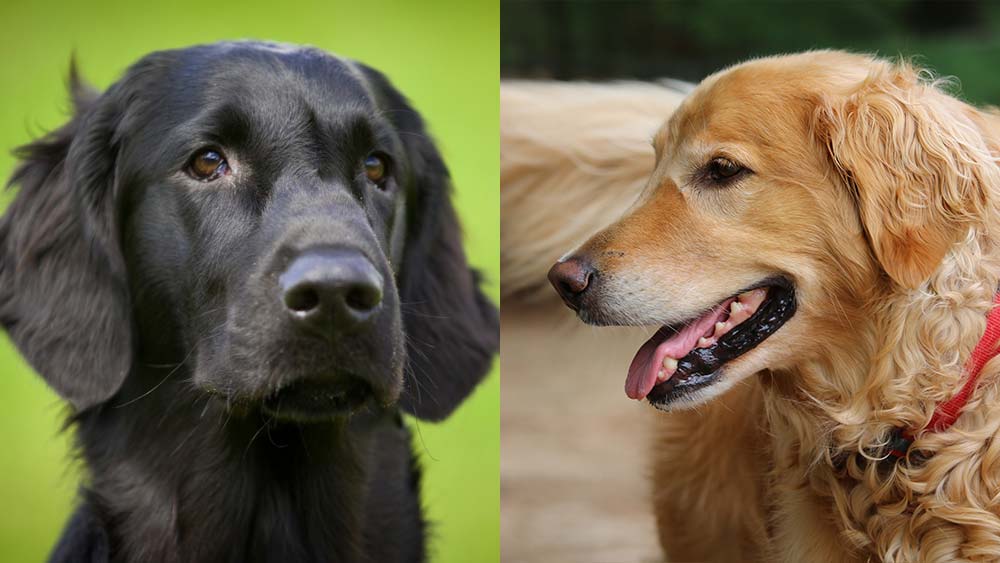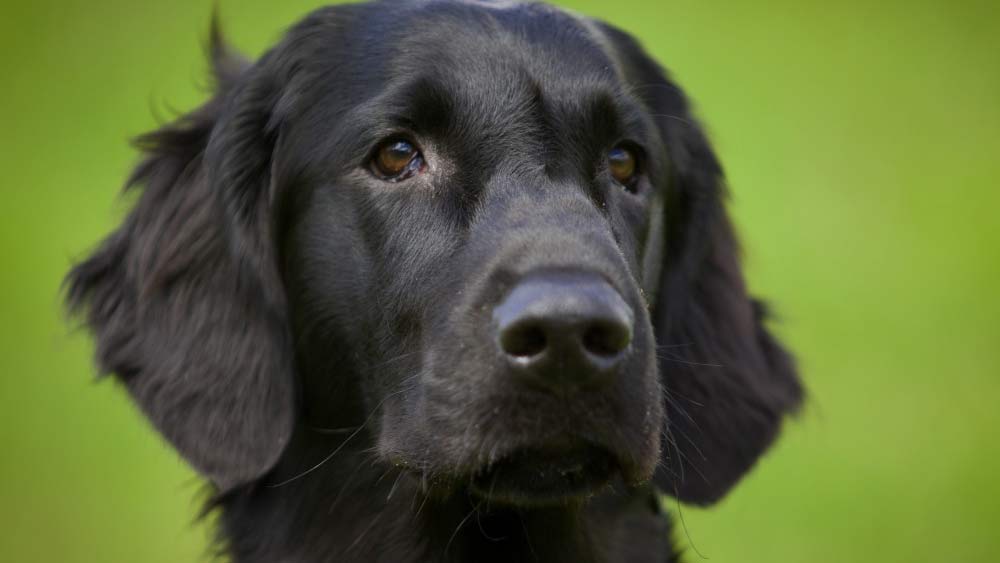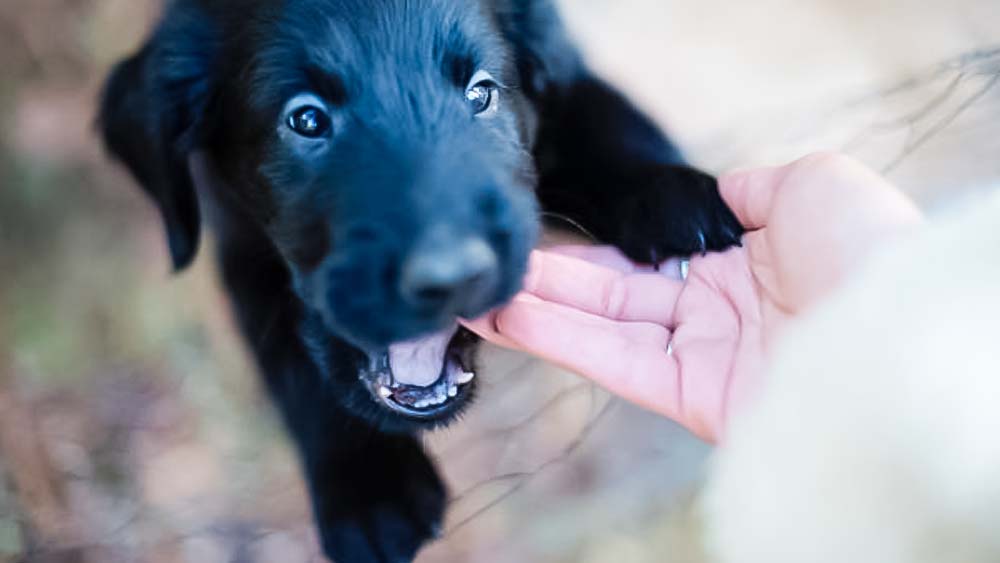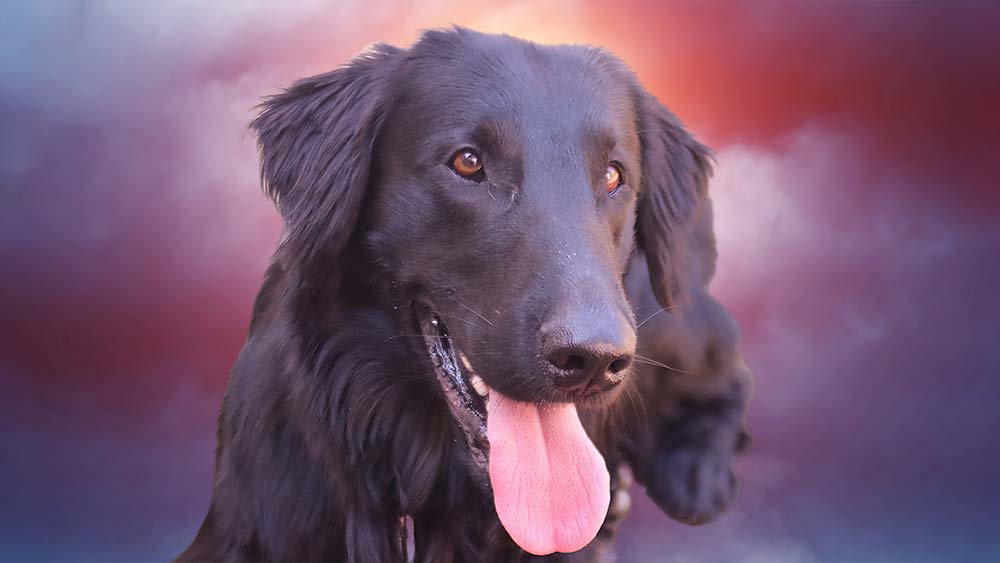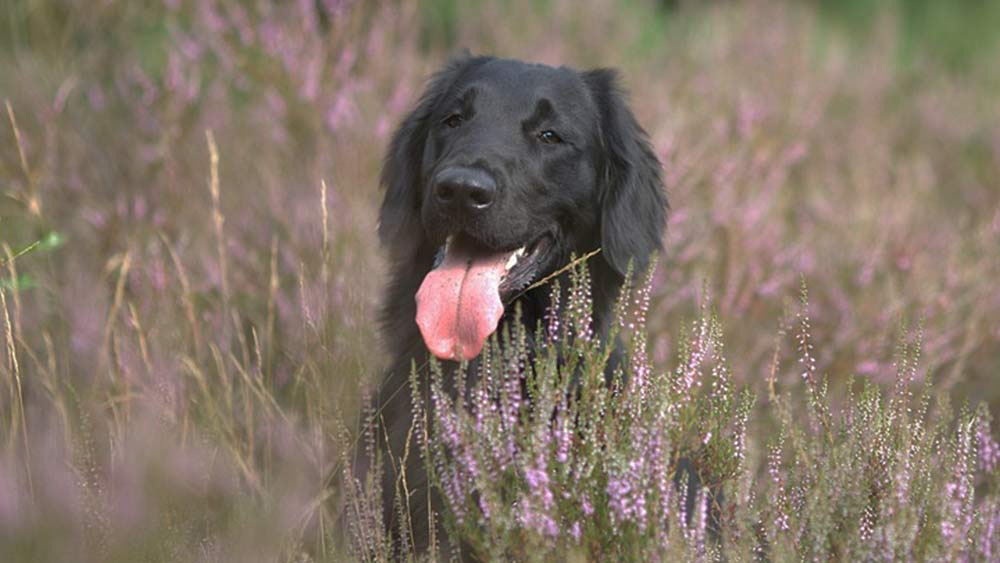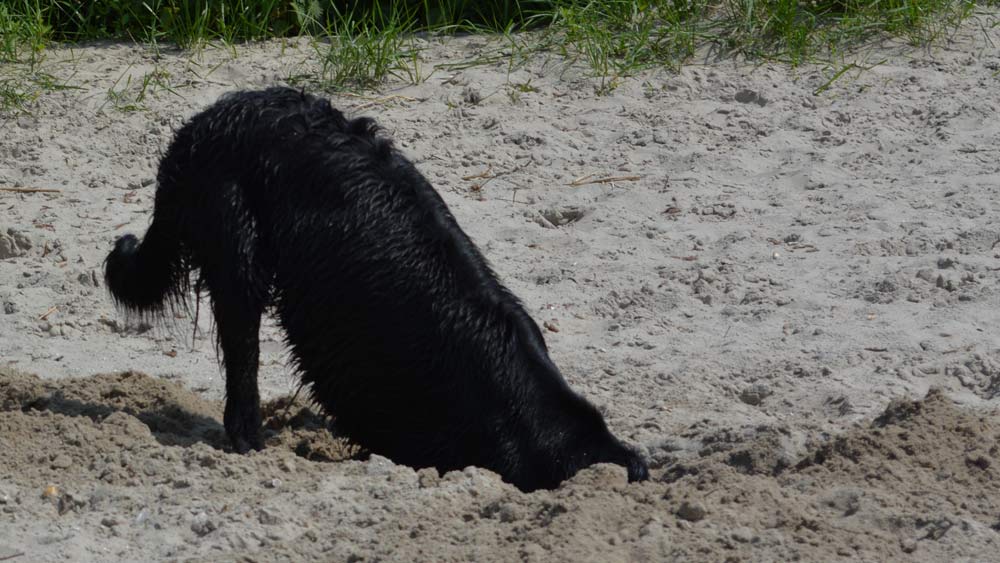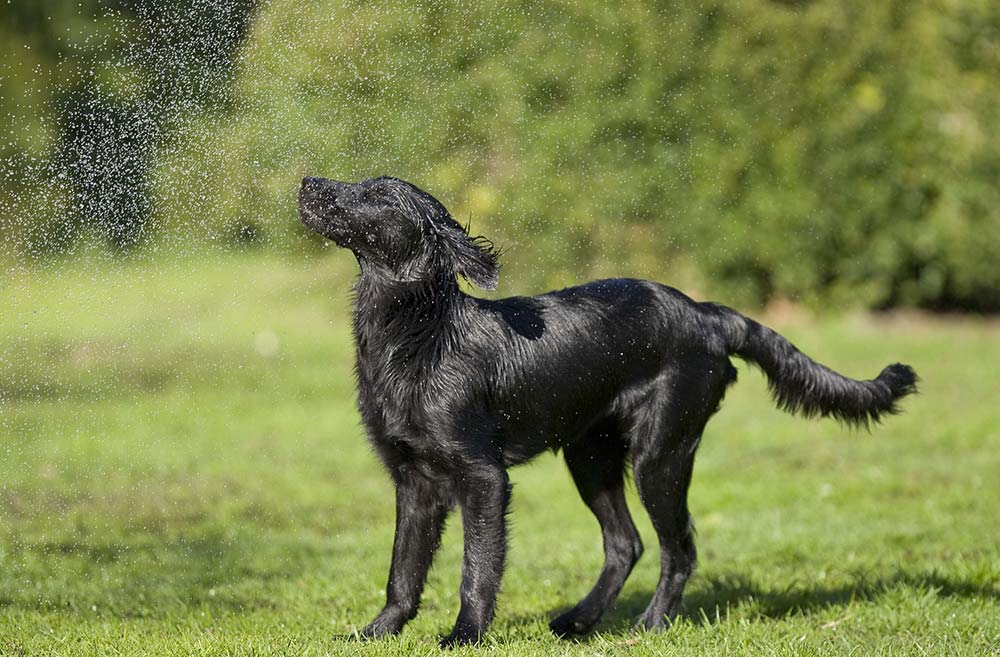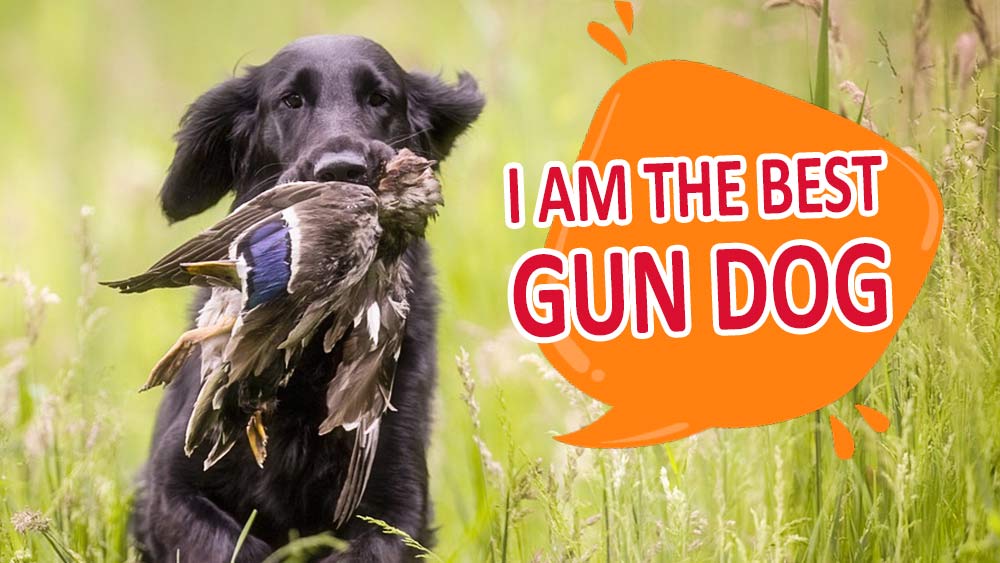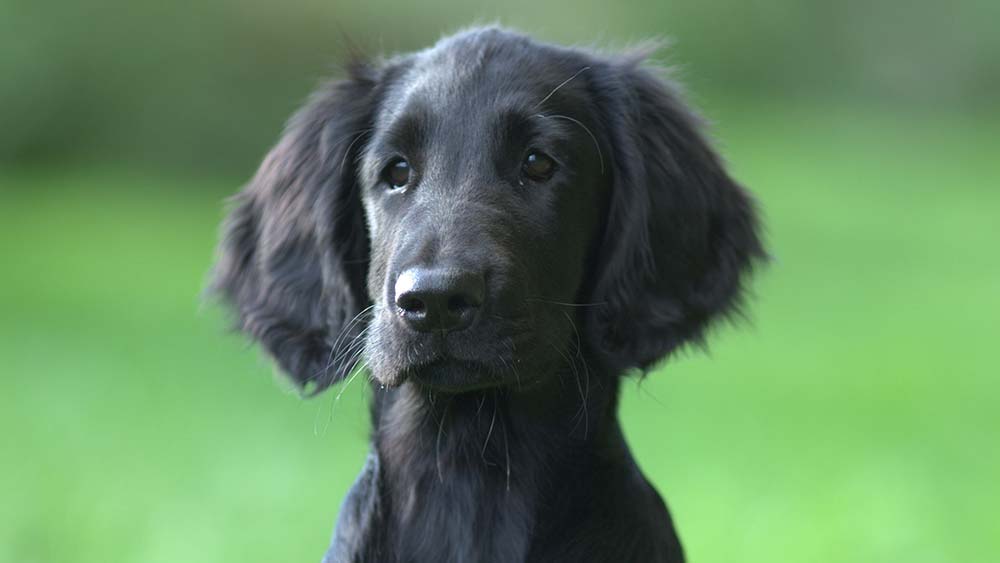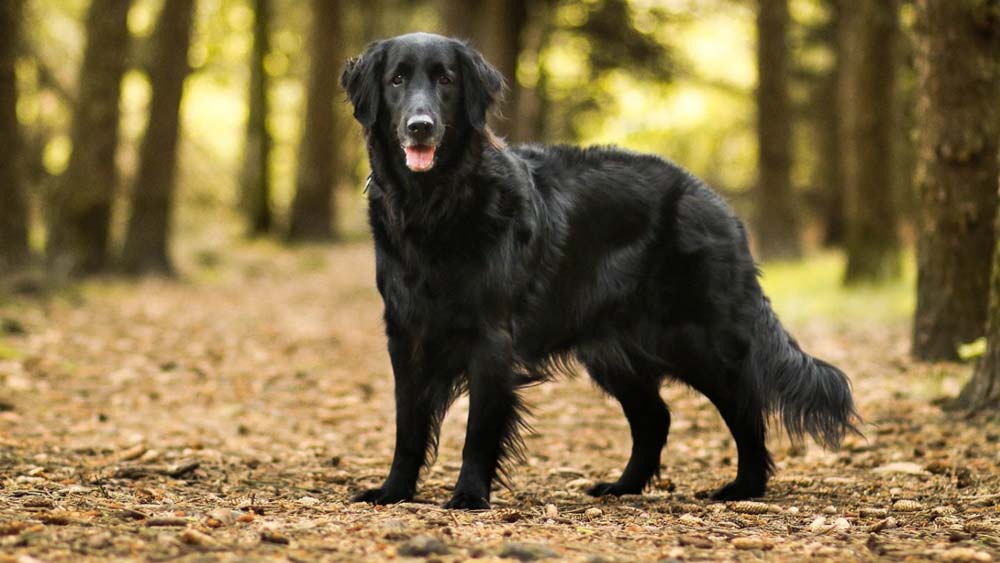Are you looking for a fun, loyal and intelligent companion? Look no further than the flat coated retriever! This friendly pup is full of energy and loves to play. But as with any pet, proper training is essential for your flat coated retriever’s health and happiness. With patience, consistency, and lots of positive reinforcement, you can teach your flat coated retriever how to behave in any situation. Here’s our step-by-step guide on how to train your flat coated retriever so that they become a model canine citizen!
Some Facts About Flat Coated Retrievers
The Flat-Coated Retriever, formerly known as the Wavy-Coated Retriever, is a British hunting dog breed. A Collie, a Setter, a Labrador, and a Newfoundland were most likely crossed to create this breed. This dog is now used as a hunting retriever and a family pet.
The Flat-Coated Retriever is a large breed of dog. It is usually between 22 and 23 inches tall and weighs between 60 and 70 pounds. It has a medium-length coat that is soft to the touch. This dog is available in solid black or liver colors. This breed can live to be around 14 years old if properly cared for and fed.
Flat coated Retrievers are the lightest of the Retriever breeds and are classified as Gun dogs. This breed has been bred and trained to work on land and water and also make excellent family companions. They bring back shot birds, hares, and rabbits.
Thing To Know Before you start
it’s important to understand some facts about this breed. Flat coated retrievers are known for their intelligence and a strong desire to please their owners. They also have an average energy level and require at least 40 minutes of exercise per day to stay healthy and happy. In addition, flat coated retrievers are relatively low maintenance when it comes to grooming needs – they don’t drool or snore often, don’t bark excessively, and rarely dig holes in the yard. Finally, flat coated retrievers have a long lifespan ranging from 10-14 years old and crave social interaction with their family members.
- Exercise Requirements: >40 minutes/day
- Energy Level: Average
- Longevity Range: 10-14 yrs.
- Tendency to Drool: Low Tendency to Snore: Low
- Tendency to Bark: Low
- Tendency to Dig: Low
- Social/Attention Needs: High
Read More: Flat-Coated Retriever Traits & Temperament Explained!
Step By Step Guide To Train A Flat Coated Retriever
Flat coated retrievers are the perfect family pet: smart, friendly and loyal. But in order to ensure your flat coated retriever is a model canine citizen, proper training is essential. With patience, consistency, and lots of positive reinforcement you can teach your flat coated retriever how to behave in any situation. To help you get started on the right path with flat coated retriever training we have created this step-by-step guide so that you can train your flat coated retriever quickly and easily. Let’s get started!
1. Start Socialization Early:
It’s important to start flat coated retriever socialization from a young age. Introduce your flat coated retriever puppy to all kinds of people, animals, sounds and sights in a positive and fun way. This will help them build confidence and get used to new situations early on.
2. Establish House Rules:
Help your flat coated retriever puppy understand which behaviors are acceptable by establishing house rules early on. Set up consistent boundaries they can understand so they don’t become confused or anxious when being trained.
Read More: How To Prepare For Your First Flat Coated Retriever Puppy
3. Introduce Basic Commands:
Start with basic commands such as “sit”, “down”, “stay”, “come” and “leave it” in order to teach your flat-coated retriever the basics of obedience training. Use treats as rewards for good behavior until your flat-coated retriever has learned each command successfully.
4. Practice Leash Walking:
As flat-coated retrievers are naturally energetic and active dogs, it is important that you practice leash walking with them so that you can keep them under control in public places and prevent them from running off. Begin by having them walk alongside you around the house on a leash before venturing outdoors for longer walks.
5. Teach Recall Commands:
Teaching recall commands helps to ensure that your flat-coated retriever will come back when called in any situation – this proves particularly useful if they ever escape or become lost during a walk outdoors! You should initially practice recall commands in a quiet place free of distractions before taking the exercise outside into more stimulating environments like parks or forests
6 . Introduce Distractions Gradually:
Once you have established the basics of obedience training , gradually introduce different types of distraction into your flat-coated retriever’s routine in order to help them stay focused during any situation . This could include introducing different types of people , animals , noises , smells etc . slowly over time until they are able to remain focused regardless of what is going on around them .
7 . Take Regular Breaks During Training Sessions:
Flat – coated retrievers can become easily distracted while being trained so it’s important that you take regular breaks during any training sessions . Give your flat – coated retriever plenty of praise during breaks and make sure they have access to fresh water at all times .
8 . Don’t Forget Exercise Requirements:
Flat – coated retrievers need at least 40 minutes of exercise per day in order to stay healthy and happy so make sure you set aside time each day for walks , playtime , agility courses etc . Not only does this provide necessary physical activity but also mental stimulation which is equally important for these intelligent pups !
9 . Praise Good Behavior:
Make sure you reward good behavior every time ! Praising your flat – coated retriever after completing an action correctly ( using verbal cues as well as treats ) will help reinforce positive behaviors and discourage any undesirable ones from occurring again in future .
10. Stay Consistent:
remember to stay consistent when training your flat – coated retriever ! Setting clear expectations and sticking to them will help you both develop a relationship based on trust and respect .
Read More: Importance of Consistency with Flat Coated Retrievers
11 . Consult Professional Trainers When Needed:
Last but not least, If you find yourself struggling with any aspects of flat – coated retriever training then don’t hesitate to contact a professional who can provide additional guidance or advice if needed !
What Are the Basic Commands To Teach A Flat Coated Retriever?
1. Sit
2. Down
3. Stay
4. Come
5. Leave It
6. Heel
7. Wait/Stay Put
8. Drop it
9. Go to your Place (Bed)
10 Speak or Quiet
What Are the Advanced Commands To Teach A Flat Coated Retriever?
1. Target Recall
2. Retrieve
3. Fetch
4. Tracking and Scenting
5. Agility Training
6. Heel Work/Loose Leash Walking
7. Nose Games (finding objects by scent)
8. Close Quarters Control (off-leash control in tight spaces)
9. Advanced Commands (e,g, come to the front, spin around)
10 Hand Signals
What To Do If your Flat Coated Retriever Wont Learn Anything?
1. Be Patient:
Training takes time, and flat-coated retrievers can take a bit longer to learn compared to other breeds. Patience is key to successfully training your flat-coated retriever.
2. Utilize Positive Reinforcement:
Make sure you are rewarding your flat-coated retriever for desired behaviors and avoiding punishing them for unwanted behaviors. This will help establish the desired behavior more quickly over time .
3. Break Tasks Into Smaller Steps:
If you find that your flat-coated retriever isn’t responding well to a particular command or exercise, try breaking it down into smaller steps so they can understand it better .
4. Consult Professional Trainers When Needed:
If all else fails, it’s time to seek professional help. A trainer can provide valuable advice and assistance in helping your flat-coated retriever learn their desired behaviors and commands more effectively.
Summary:
Flat-coated retrievers are wonderful family dogs, known for their love of children, friendly nature and sociability. Exercise is essential for flat-coated retrievers in order to keep them healthy and happy; they require at least 40 minutes per day of physical activity. Additionally, flat-coated retrievers need plenty of attention and affection from their owners in order to stay content. They tend not to drool or snore, and usually have low barking or digging tendencies; however, they do require social interaction to remain satisfied.
Training flat-coated retrievers can be a challenge but with patience, dedication and the proper techniques, it can be done successfully. Introducing different types of people, animals, noises and smells in a calm environment will help them become more accepting of new situations. Taking regular breaks during training sessions is also beneficial as flat-coated retrievers can easily become distracted while being trained. Rewarding them after completing an action correctly with verbal cues as well as treats will help reinforce good behavior.
It’s important to stay consistent when training flat-coated retrievers; setting clear expectations and sticking to them will allow owners to establish trust and respect with their pup. Consulting professional trainers if needed can also provide an extra layer of guidance should any difficulties arise along the way! Basic commands to teach flat-coated retrievers include sit, down, stay, come leave it heel wait/stay put drop it go to your place (bed) speak or quiet as well as more advanced commands such as target recall retrieve fetch agility tracking scenting heel work/loose leash walking nose games close quarters control and advanced commands such as come to the front spin around etc . If a flat – coated retriever isn’t responding well , owners should remember be patient utilize positive reinforcement break tasks into smaller steps and consult professional trainers when necessary .
Happy training! 🙂
Read More: Are Flat-Coated Retrievers Good For First Time Owners? Q&A
Read More: Are Flat Coated Retrievers Good Family Dogs?
Read More: Flat-Coated Retriever VS Golden Retriever: Compared In Depth
Read More: Labrador vs flat-coated retriever: Compared in Depth

